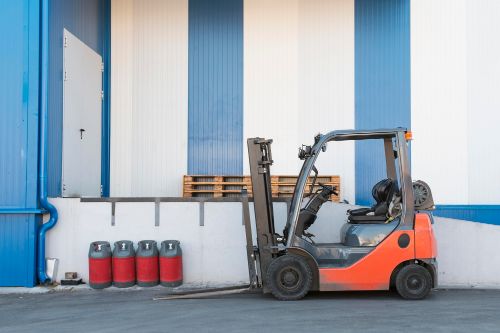
The purpose of forklift propane MSDS is to provide information on the potential hazards of a chemical and how to safely use and handle it. MSDS sheets are required for all chemicals used in the workplace and must be readily available to employees.
MSDS sheets must be reviewed prior to using any new chemical. They should be reviewed periodically as well, as new information on the hazards of a chemical may become available. Employees should be trained on how to read and understand MSDS sheets.
MSDS sheets are an important tool in ensuring the safety of employees who work with hazardous materials. By understanding the potential hazards of a chemical and how to safely use and handle it, employees can help protect themselves from injury or illness.
Forklift propane MSDS will typically contain the following information
- Product identification: This section will include the name of the product, as well as any other identifying information, such as the manufacturer’s name and the product’s chemical formula.
- Hazardous ingredients: This section will list all of the hazardous ingredients in the propane, along with their concentration levels.
- Physical and chemical properties: This section will describe the physical and chemical properties of the propane, such as its boiling point, flash point, and vapor pressure.
- Fire and explosion hazard data: This section will provide information on the fire and explosion hazards associated with the propane, including any necessary precautions that should be taken to prevent fires or explosions.
- Reactivity data: This section will describe the reactivity of the propane and any potential hazardous reactions that may occur when it comes into contact with other materials.
- Health hazard data: This section will provide information on the potential health hazards associated with exposure to the propane, including any symptoms that may be experienced and any necessary first aid measures.
- Precautions for safe handling and use: This section will provide guidance on how to handle and store the propane safely, including any necessary protective measures and emergency procedures.
- Control measures: This section will describe the measures that should be taken to control the release of the propane and to minimize the risks of exposure.
- Firefighting measures: These detail what to do in case of accidental ignition and fire.
- First aid measures: these detail what to do when a person comes into contact with the liquid.
- Accidental release measure: These detail what to do when propane in liquid form is accidentally released.
Read related article: Forklift Propane Tank Exchange (Cost, Where to Fill These Cylinders)
To Detail What Does the MSDS Contain
Here are what the forklift propane MSDS contains:
Product and company identification information
- Product name: Propane
- Chemical formula: C3H8
- Synonyms: LPG (Liquefied Petroleum Gas), LP-Gas
- Manufacturer or supplier: XYZ Company
- Address: 123 Main Street, Anytown, USA
- Phone number: (123) 456-7890
- Emergency phone number: (123) 456-7890 (for use in case of emergency)
Composition/ingredients information
- Composition: Propane (C3H8) 99.5%
- Impurities: Ethane (C2H6) 0.5%
Accidental release measures
- Evacuation: If the release of propane gas is significant, it may be necessary to evacuate the area to ensure the safety of people and animals.
- Isolation: If possible, the area where the release occurred should be isolated by closing all doors, windows, and other openings to prevent the spread of the gas.
- Ventilation: If the release occurs inside a building, it is important to ventilate the area by opening windows and doors to disperse the gas.
- Shut off the gas supply: If the release is coming from a gas appliance or equipment, it is important to shut off the gas supply to prevent further release.
- Do not use electrical switches or appliances: Electrical switches, appliances, or other sources of ignition should not be used in the area where the gas is present, as they may ignite the gas and cause a fire or explosion.
- Do not smoke: Smoking should be strictly prohibited in the area where the gas is present, as cigarettes or other sources of ignition may ignite the gas.
- Call for emergency assistance: If the release is significant or if there is any danger of a fire or explosion, it is important to call for emergency assistance immediately.
Read related article: Forklift Propane Tank Orientation: Do These for Universal Tank
Storage and handling of tanks and cylinders
- Use appropriate containers: Propane gas should be stored in appropriate containers that are designed specifically for this purpose. These containers should be made of materials that are resistant to corrosion and have sufficient structural integrity to withstand the pressure of the gas.
- Keep containers closed: Propane gas containers should always be kept closed when not in use to prevent the escape of gas.
- Store containers in a well-ventilated area: Propane gas containers should be stored in a well-ventilated area to prevent the buildup of gas.
- Keep containers away from heat sources: Propane gas containers should be kept away from heat sources, such as open flames, hot surfaces, and electrical equipment, as they may ignite the gas.
- Do not store propane gas near hazardous materials: Propane gas should not be stored near hazardous materials, such as chemicals or explosives, as this may increase the risk of a fire or explosion.
- Follow local regulations: It is important to follow all local regulations regarding the handling and storage of propane gas, including any specific requirements for the location and type of container used.
Personal protection measures
- Wear protective clothing: When handling or working with propane gas, it is important to wear protective clothing, such as goggles, gloves, and a face shield, to protect against splashes or spills.
- Use appropriate respiratory protection: If the concentration of propane gas in the air is high or if there is a risk of inhaling the gas, it is important to use appropriate respiratory protection, such as a gas mask or self-contained breathing apparatus.
- Follow good hygiene practices: Good hygiene practices, such as washing hands and face after handling propane gas, can help to prevent the absorption of the gas through the skin or mucous membranes.
- Follow safe handling practices: It is important to follow safe handling practices when working with propane gas, including following all instructions and warnings provided by the manufacturer or supplier and taking care to avoid contact with the gas.
- Seek medical attention if necessary: If you experience any symptoms after being exposed to propane gas, such as dizziness, headaches, or difficulty breathing, it is important to seek medical attention immediately.
First-aid measures
- Inhalation: If you inhale large amounts of propane, you may experience symptoms such as dizziness, headache, nausea, and unconsciousness. If you or someone you are with experiences these symptoms, move to a well-ventilated area and get medical attention immediately.
- Skin contact: If propane comes into contact with your skin, wash the affected area thoroughly with soap and water. If the skin becomes red or swollen, or if you experience any other symptoms, seek medical attention.
- Eye contact: If propane gets into your eyes, rinse your eyes thoroughly with water for at least 15 minutes and seek medical attention.
- Ingestion: If you accidentally swallow propane, do not induce vomiting and seek medical attention immediately.
Read related article: Can I Use a Regular Propane Tank on a Forklift? (Where Do They Differ)
Fire fighting measures
- Extinguishing media: Propane gas is flammable and can be extinguished with dry chemicals, foam, or carbon dioxide (CO2) fire extinguishers. Water may not be effective at extinguishing a propane fire and may cause the fire to spread.
- Special hazards arising from the substance itself, combustion products, or resulting gases: Propane gas is flammable and can ignite easily. If a propane fire occurs, it can produce toxic gases, including carbon monoxide (CO). In the event of a fire, it is important to evacuate the area and seek shelter in a well-ventilated area.
- Protective equipment and precautions for firefighters: Firefighters should wear self-contained breathing apparatus (SCBA) and full protective equipment when fighting a propane fire.
Physical and chemical properties of propane
- Molecular formula: C3H8
- Molecular weight: 44.1 g/mol
- Physical state: Propane gas is a colorless and odorless gas at standard temperature and pressure.
- Melting point: -187.7°C (-306.9°F)
- Boiling point: -42.1°C (-43.8°F)
- Vapor pressure: Propane has a relatively high vapor pressure, which means that it readily evaporates into the air at room temperature.
- Vapor density: Propane has a vapor density of 2.0, which means that it is slightly heavier than air.
- Solubility: Propane is not soluble in water.
- Flammability: Propane is a highly flammable gas, with a lower flammable limit of 2.1% and an upper flammable limit of 9.5%.
Regulatory information
- includes information on any federal, state, or local regulations that apply to the product. This may include information on the proper labeling and handling of the product, as well as any specific requirements for its storage, use, and disposal.
Toxicological information
- The toxicological information section of a Material Safety Data Sheet (MSDS) for propane provides information on the potential health effects of exposure to the product. This may include information on the acute (short-term) and chronic (long-term) effects of inhaling, ingesting, or coming into contact with the product, as well as any specific hazards that may be associated with its use.
Disposal considerations
- The disposal considerations section of a Material Safety Data Sheet (MSDS) for propane provides information on the proper disposal of the product and any waste resulting from its use. This may include information on the appropriate disposal methods, as well as any regulatory requirements that apply to the disposal of the product.
It is important to read and understand the information provided in the MSDS and to follow all safety precautions and guidelines when handling and storing propane.
The Retailer Should Provide the MSDS Sheet to Customers
The retailer has the obligation to provide their customers with the MSDS (material safety data sheet) for the product. The MSDS must be readily available to your customers upon request and should be easily accessible on your website or in your place of business.
The MSDS is an important document that provides critical information about the propane product, including its hazards, first aid measures, and precautions that should be taken when handling and using the product. It is important that your customers have this information so that they can use the propane safely and effectively.
If you do not have an MSDS for your propane product, you should contact the manufacturer or supplier to obtain one. You should also make sure that your employees are trained on how to use and handle the propane, as well as how to properly clean up any spills.
What is the Purpose of Forklift Propane MSDS and Who Needs to Use One?
As the name suggests, an MSDS is a document that provides information on the properties and hazards of a particular substance. It is intended for use by those who are exposed to the substance, either through direct contact or indirectly through the environment.
The purpose of an MSDS is to help individuals identify and control the risks associated with exposure to a hazardous substance. MSDSs provide information on the physical and chemical properties of a substance, as well as its potential health effects. They also offer guidance on how to safely work with or dispose of the substance.
MSDSs are required for all chemicals that are regulated under the Occupational Safety and Health Administration’s (OSHA) Hazard Communication Standard (HCS). The HCS requires employers to develop and implement a written hazard communication program that includes procedures for handling and storing hazardous materials, as well as for providing employees with information on the potential hazards they may be exposed to.
MSDSs must be readily accessible to employees who may be exposed to hazardous substances in the workplace. Employers are responsible for ensuring that MSDSs are available and up-to-date. Employees should be trained on how to access and use MSDSs, as well as on the procedures for dealing with hazardous materials in the workplace.
Where Can You Find the MSDS Sheet
There are a few places you can find a propane MSDS sheet. The first place to check is the manufacturer’s website. Many manufacturers will have MSDS sheets available for download on their website.
Another place to find an MSDS sheet for propane is through the National Fire Protection Association (NFPA). The NFPA is a nonprofit organization that develops and maintains standards for fire safety. They have an online database of MSDS sheets that you can search by chemical name.If you’re having trouble finding an MSDS sheet for propane, you can try contacting your local propane supplier.
They should be able to provide you with the information you need.
To Make a Conclusion
understanding the Material Safety Data Sheet (MSDS) for forklift propane is crucial for ensuring safe and efficient use. This comprehensive guide provides essential information on the properties, handling, storage, and emergency measures related to propane used in forklifts. It highlights the importance of being aware of propane’s characteristics, such as its high energy density and flammability, to minimize risks in the workplace.
By adhering to the safety guidelines and procedures outlined in the MSDS, operators and businesses can ensure a safe environment while maximizing the efficiency and benefits of using propane-powered forklifts. Always remember that safety and informed handling are key to leveraging the advantages of propane in industrial settings.

Mike is an experienced propane technician with over 15 years of professional experience in the field. He has dedicated his career to helping customers with their propane needs, from installation to maintenance and repair. Together with Jeremy, he co-founded this website to provide useful information and guidance to customers seeking reliable propane services.




